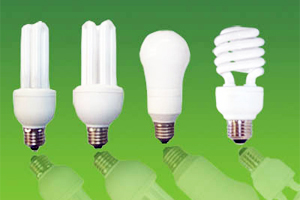 Every time you turn on the lights, you may be putting yourself at risk, according to a disturbing new study.
Every time you turn on the lights, you may be putting yourself at risk, according to a disturbing new study.
Energy efficient bulbs are eco-friendly and can save you big bucks, but experts say that some could also have a dark side.
“When there is something in your house, you don’t perceive any danger, you wouldn’t get that close to an x-ray in a doctor’s office,” explained Miriam Rafailovich, Professor of Materials Science at Stony Brook University in New York.
Money saving, compact fluorescent light bulbs emit high levels of ultra violet radiation, according to a new study. Research at Long Island’s Stony Brook found that the bulbs emit rays so strong that they can actually burn skin and skin cells and was first reported by a CBS news station in Miami.
“The results were that you could actually initiate cell death,” said Marcia Simon, a Professor of Dermatology.
Exposure to the bulbs could lead to premature aging and skin cancer, according to doctors.
“It can also cause skin cancer in the deadliest for, and that’s melanoma,” said Dr. Rebecca Tung.
In every bulb that researchers tested they found that the protective coating around the light creating ‘phosphor’ was cracked, allowing dangerous ultraviolet rays to escape.
The abstract from the study follows: Compact fluorescent light (CFL) bulbs can provide the same amount of lumens as incandescent light bulbs, using one quarter of the energy. Recently, CFL exposure was found to exacerbate existing skin conditions; however, the effects of CFL exposure on healthy skin tissue have not been thoroughly investigated. In this study, we studied the effects of exposure to CFL illumination on healthy human skin tissue cells (fibroblasts and keratinocytes). Cells exposed to CFLs exhibited a decrease in the proliferation rate, a significant increase in the production of reactive oxygen species, and a decrease in their ability to contract collagen. Measurements of UV emissions from these bulbs found significant levels of UVC and UVA (mercury [Hg] emission lines), which appeared to originate from cracks in the phosphor coatings, present in all bulbs studied. The response of the cells to the CFLs was consistent with damage from UV radiation, which was further enhanced when low dosages of TiO2 nanoparticles (NPs), normally used for UV absorption, were added prior to exposure. No effect on cells, with or without TiO2 NPs, was observed when they were exposed to incandescent light of the same intensity.
